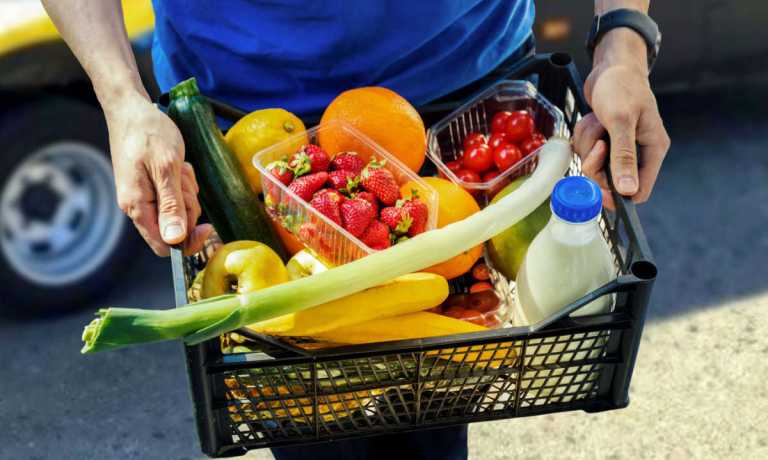
As grocers look to manage their increasingly omnichannel businesses, Instacart is pushing back on the sentiment that consumers turn to digital channels predominantly for shelf-stable items while going to stores for perishable goods.
The grocery aggregator shared in its first Instacart Economic Impact Report that roughly one in four items sold through the platform is a fresh fruit or vegetable, with 13% of items sold being the former and 11% the latter. Additionally, the company observed that bananas are the most commonly bought items on its marketplace, with 1.3 billion of the fruit having been purchased since the aggregator’s initial launch.
Yet some major players in the space are noting the opposite. For instance, as Amazon looks to grow its digital grocery presence, testing new store formats, subscriptions and fee structures, the eCommerce giant has seen consumers order pantry goods digitally while sticking to brick-and-mortar for fresh foods.
“If you think about the aisles in a grocery store, from packaged food to paper products to canned goods to pet supplies to health and personal care items to consumables, we have a very large business there that continues to grow at a rapid clip and then we think will continue to grow,” Amazon CEO Andy Jassy told analysts on an earnings call in February. “But … if you really want to have significant market segment share in perishables, you typically need physical stores.”
Indeed, consumers are more likely to turn to digital channels for shelf-stable items than perishable goods, as the PYMNTS Intelligence study “Changes in Grocery Shopping Habits and Perception,” which drew from a survey late last year of more than 2,400 U.S. consumers, found.
The results showed, for instance, that, on average, 44% of shoppers now buy the majority of various common grocery items from traditional brick-and-mortar grocery stores, yet that share jumps to 53% for fresh fruits and vegetables, and 54% for fresh meat and fish, while dropping down to 35% for paper products and cleaning supplies.
“It’s really hard to nail the quality of freshness and ripeness that customers would choose if they were shopping themselves,” Alex Ruhter, CEO and co-founder of curbside-only grocery store JackBe, told PYMNTS in an interview earlier this year.
However, Instacart’s data would indicate that consumers are more willing to trust eCommerce for perishables when they are ordering same-day delivery than via other digital grocery channels. That is, a consumer may not be able to add fresh fruit for shipping to their Amazon order, but they can more easily add these kinds of items to their basket when making an on-demand delivery purchase from a grocer.
Overall, an increasing share of grocery customers are engaging digitally. According to the survey “Consumer Interest in an Everyday App,” a PYMNTS Intelligence and PayPal collaboration that drew on responses from more than 2,200 U.S. consumers, 61% of those who had shopped for groceries in the previous month did so via connected devices at least some of the time.
With consumers demonstrating a willingness to trust eCommerce platforms for fresh produce and other perishable goods with same-day delivery, the landscape of digital grocery shopping continues to evolve.